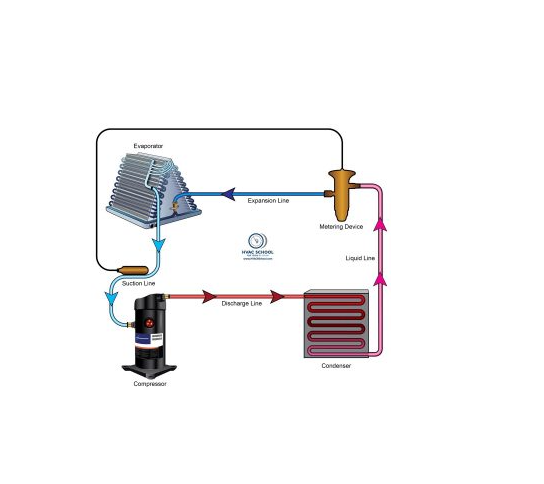HVAC Metering System Replacement
Standard replacement of HVAC metering system per industry standards.

This is a standard HVAC Metering System Replacement, wherein we remove and replace the metering system and liquid line filter drier to ensure proper unit repair.
Definition: The metering device is the component in an air conditioning system that drastically reduces the temperature and pressure of refrigerant coming from the condenser before that refrigerant enters the evaporator. The metering device is responsible for feeding the proper amount of refrigerant to the evaporator coil. The refrigerant that enters the metering devices is a high temperature, high pressure, subcooled liquid that leaves the devices as a low-temperature, low-pressure saturated liquid.
Scope of Work
- The existing thermostatic expansion valve was noted to be inoperable (flooding/ starving) at the time of service, requiring replacement.
- Recover and dispose of the existing refrigerant and liquid line filter drier per EPA regulations (40 CFR Part 82, Subpart F) under Section 608 of the Clean Air Act
- Demo and dispose of the existing thermostatic metering device
- Furnish and install (1) new OEM style refrigerant metering system
- Furnish and install (1) new applicably sized liquid line filter drier
- Pressure test system with dry nitrogen to ensure all newly soldered copper connections are leak free prior to evacuation
- Evacuate system to 500 microns per EPA/ ASHRAE requirements
- Recharge system with applicable refrigerant to the manufacturer's superheat and subcooling specifications
- Once unit is fully topped off with refrigerant, obtain operational pressures, superheat and subcool values for documentation, and make adjustments to refrigerant charge as necessary.
This article has been shared by Direct Service, Construction and Design to specifically accommodate our intended clientele. The intent of sharing this information is to better inform the public of these general topics, expand knowledge and safety for all and provide crucial information in regard to their MEP and building systems and/or assets. It is NOT our recommendation that any article recommendations or how-to scenarios be attempted by anyone other than a qualified or competent person.
